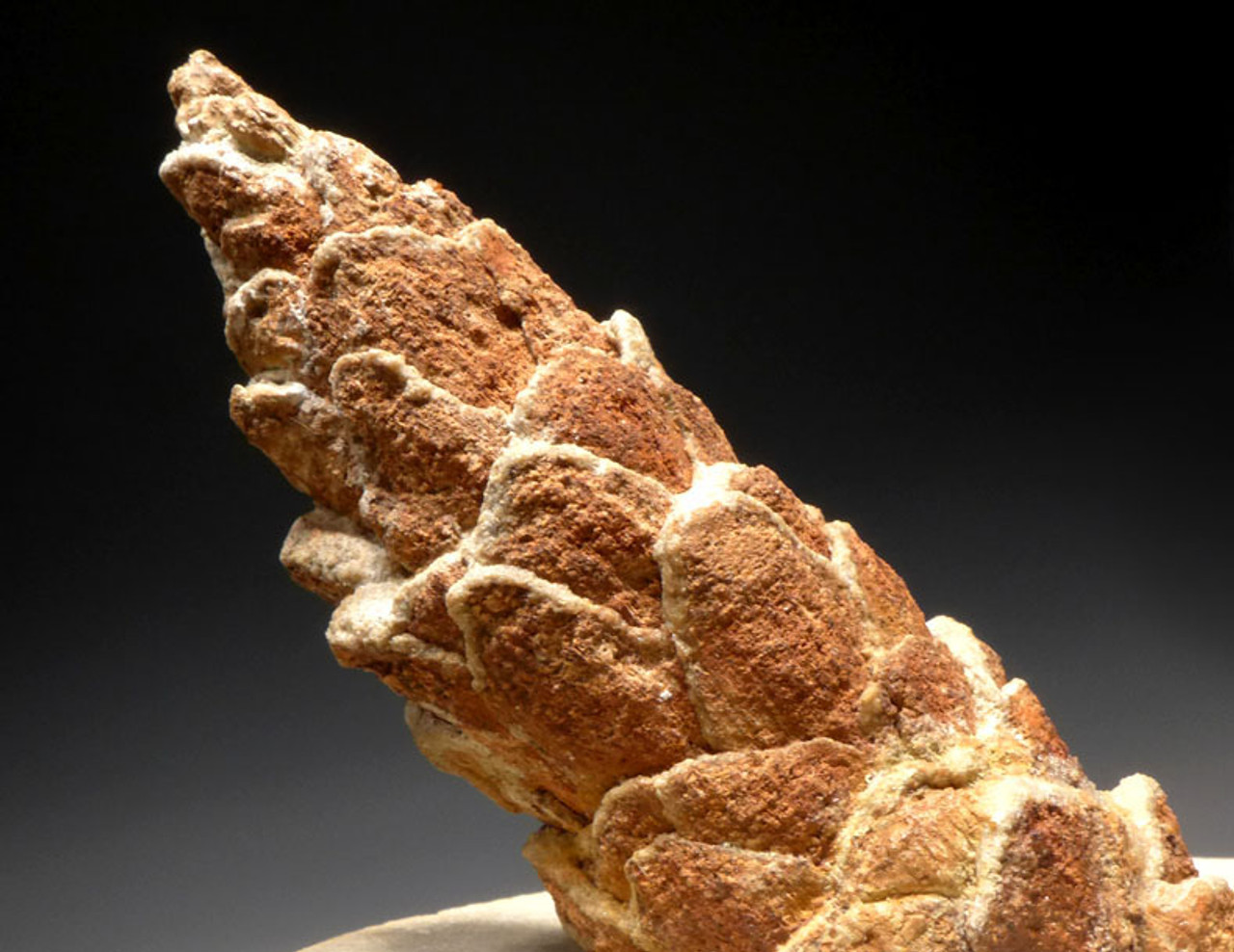Product Description
ITEM #
|
PL082
|
||
ID
|
Pinus sp.
|
||
FOUND
|
Steinhardt (Bad Kreuznach), Germany
|
||
AGE
|
LOWER OLIGOCENE: 30 million years ago
|
||
SIZE
|
4.4" diameter concretion, exposed part of pine cone 3.5",
|
||
CONDITION
|
MINOR REPAIR BUT NO FABRICATION
|
||
NOTE
|
BEST SPECIMEN OF FORMER QUARRY FOREMAN'S COLLECTION
|
||
INCLUDES STAND - Actual Item - One Only
Comes with a certificate of authenticity / information sheet |
|||
CLICK HERE TO LEARN MORE ABOUT PLANT FOSSILS
The region of Steinhardt, Germany is famous for its "Steinhardt peas", baritised sandstone concretions formed 30 million years ago around fossil plant material like leaves, pine cones and wood fragments. On very rare occasion, shark teeth can be found in the concretions. The concretions are split open with a hammer and inside, the fossil leaves are imprints while the wood and pine cones are fossilized in full, three-dimensional form. Natural pigments of reddish brown are dominant on the fossil. A deposit long ago exhausted, produced pine cone fossils in a stark contrasting natural black pigment. Much of the fossil deposit today is depleted of the really good fossil pine cones. Today, you have to split dozens and dozens of hard sandstone concretions to fine even one small, poorly preserved pine cone.
This specimen offered here is an unusually LARGE complete pine cone from a prehistoric pine tree of Pinus sp.. It is of a type that is no longer found and even in the prime fossil-hunting days of the quarry, this was one of the best and largest examples found. It comes from the private collection of one of the former quarry foreman and he considered it one of his best he ever collected. It was prepared in a much more laboriously way than typical split methods. This one was split and then glued back together. It was then carefully prepared so that all the rock surrounding the pine cone was removed, leaving the exposed pine cone visible on all sides with it protruding from the concretion. This is a much more difficult and time-intensive method yet renders a much more dramatic specimen than the more common split methods where the pine cone is laying on its side.
The color of the pine cone is natural with minor repair to the base of the cone where some parts came off in the excavation splitting. NO FABRICATION. Pine cone is 100% AUTHENTIC WITH NATURAL COLOR.
UNLIKE THE FOSSIL PINE CONES FROM PATAGONIA, ARGENTINA, THESE PINE CONE FOSSILS ARE LEGAL.
The legend of the "Steinhardt peas" is an old German folktale and a rather interesting explanation for the discovery years ago of these highly unique fossil concretions. A long time ago, there was a rich but very mean, greedy farmer who lived in Steinhardt, Germany. One Spring, he was in his fields planting peas. Towards the end of the day as work was nearly finished, a poor, old beggar approached and politely asked for some peas for soup for his starving family. The mean farmer cursed and rejected the beggar, saying that he would rather his peas turn to stone before he would give any to a beggar. The old man turned away and sadly walked off. As the farmer went back to his work the sack of peas on his shoulder grew much heavier. As he placed the sack down, he noticed they all had turned to stone as well as the peas he had planted in the ground. Today in the fields, one can still find these odd rock concretions called Steinhardt Erbsen (peas).
 US DOLLAR
US DOLLAR
 EURO
EURO
 AUSTRALIAN DOLLAR
AUSTRALIAN DOLLAR
 CANADIAN DOLLAR
CANADIAN DOLLAR
 POUND STERLING
POUND STERLING


















